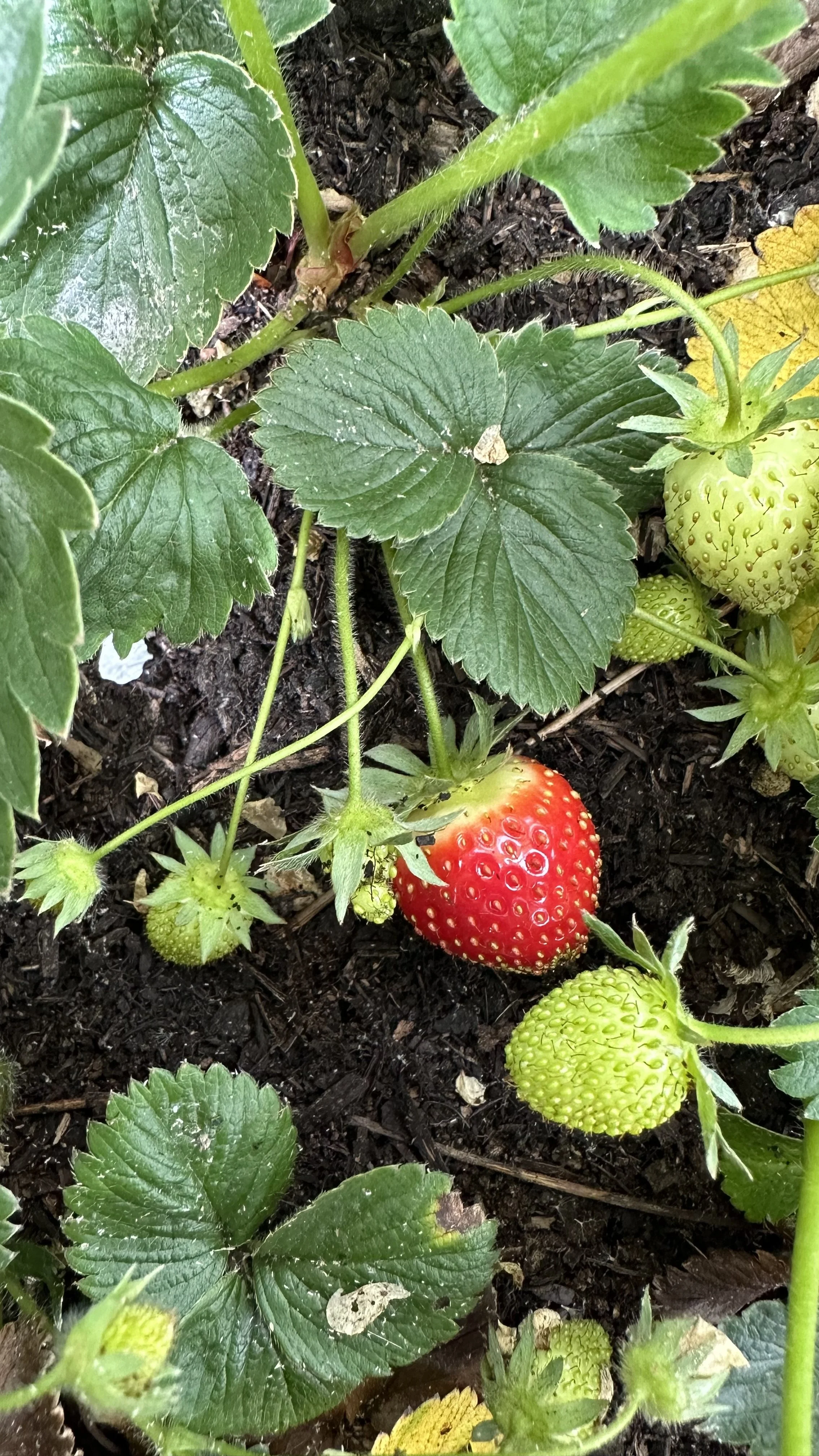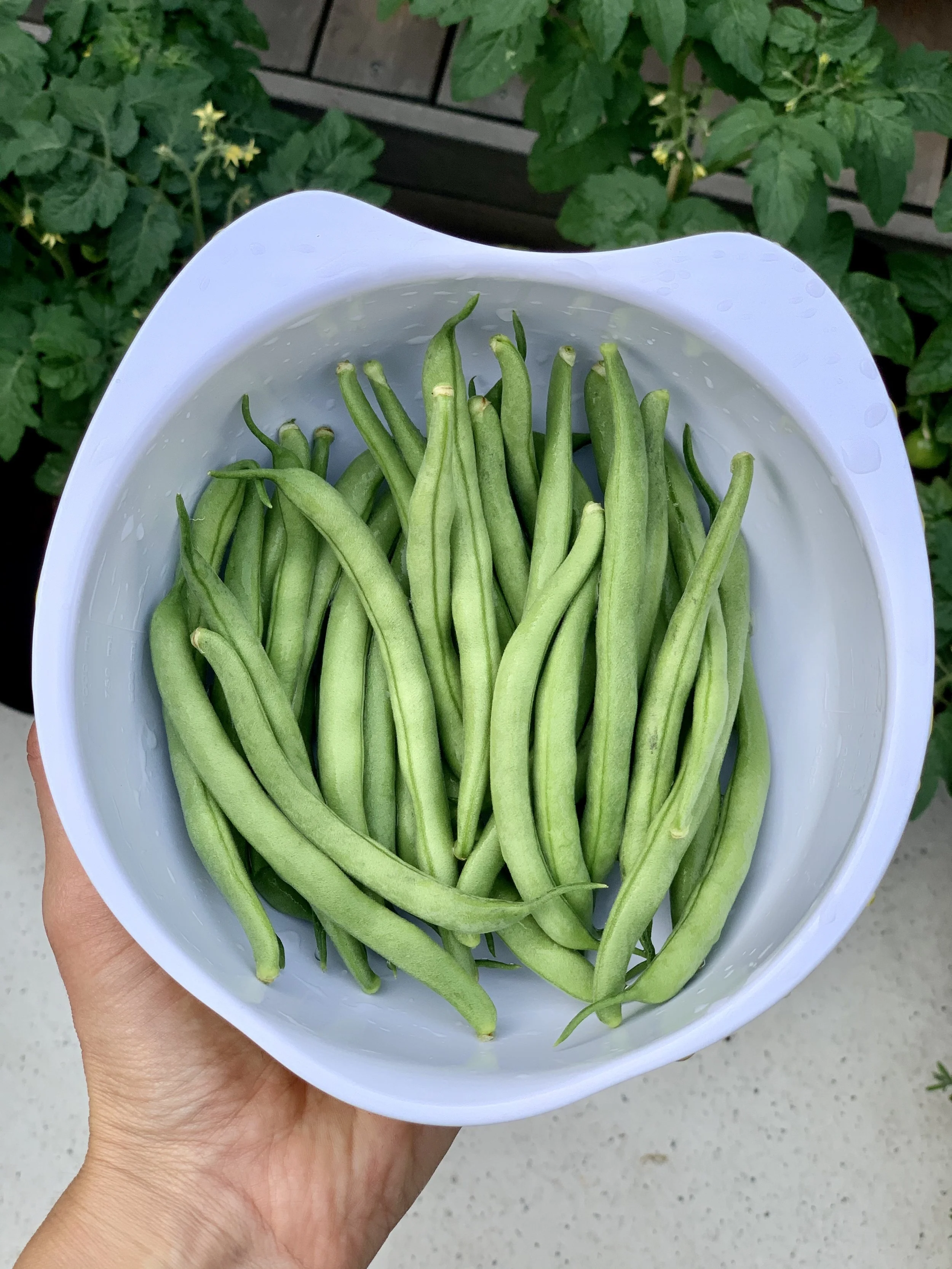This article has links to products that I may make commission from.
In the world of gardening, plants have secret alliances, working together to deter pests, enrich the soil, and even enhance each other's growth.
Rhubarb, often celebrated for its tangy taste and bright pink stalks, plays an even bigger role in the garden than you might expect.
In the vegetable garden, it forms bonds with certain plants and repels others.
In this guide, I'll unveil the magic behind rhubarb companion plants, helping you transform your garden into a haven of harmonious growth and flavor-packed harvests.
Dive in to discover which plants thrive alongside rhubarb, which ones to keep at bay, and how to make the most of this perennial favorite.
To learn more about growing rhubarb, check out my guide: Problems Growing Rhubarb: Simple Fixes.

Rhubarb Companion Plants
For many gardeners, the rich, deep hues of rhubarb stalks signify the onset of warmer months and the promise of desserts to come.
Beyond its culinary fame, however, lies a lesser-known but equally important facet of the rhubarb plant: its potential in the world of companion planting.
Rhubarb, with its broad leaves and distinctive growth pattern, interacts with its surrounding plants.
When strategically placed in a garden, rhubarb can serve multiple roles.
It not only aids other plants in their growth but can also be a shield against certain pests.
Additionally, certain plants can boost rhubarb's vitality, ensuring a healthier, more bountiful harvest.
But why does companion planting with rhubarb matter?
Firstly, understanding these relationships can save gardeners time and effort by reducing the need for chemical pest controls and fertilizers.
A well-organized garden, where rhubarb companions are strategically placed, can harness nature's own methods to achieve balance and promote health.
Secondly, understanding these interactions can yield a more prolific harvest, both of rhubarb and its neighboring plants.
With the right companions, rhubarb can flourish and provide even more of those tart, delicious stalks for springtime recipes.
To learn more about companion planting, check out my guides:
The Best Spinach Companion Plants
The Undisputed Best Oregano Companion Plants
The Best Eggplant Companion Plants

Benefits of Rhubarb in the Garden
Rhubarb, while commonly recognized for its bright pink stalks and role in delicious desserts, also stands tall as a formidable ally in the garden ecosystem.
This perennial favorite offers several advantages, making it an essential player in holistic and sustainable gardening.
Deters Pests:
While rhubarb may be enticing to us humans, especially in a pie, certain pests find it repelling.
Many gardeners have fewer issues with pests like leaf beetles when rhubarb is nearby.
This means that the surrounding plants benefit from this natural shield, reducing the damage and ensuring healthier growth.
Living Mulch:
Beyond its pest-repelling properties, rhubarb has another ace up its sleeve.
Its large, expansive leaves sprawl across the garden floor, acting as a natural ground cover.
This "living mulch" maintains soil moisture, prevents excessive evaporation on hot days, and curbs the growth of unwanted weeds.
With its shade, rhubarb also aids in preserving the soil's organic matter, leading to richer, more fertile ground over time.
Soil Enrichment:
The deep-rooted nature of rhubarb means it can draw nutrients from deeper soil layers, which are often untapped by other plants.
As the rhubarb plant sheds its leaves and they decompose, these nutrients are returned to the topsoil, benefiting the plants around it.
To learn more about companion planting, check out my guides:
Blueberry Companion Plants: The Best and Worst
The Best and Worst Carrot Companion Plants
The Best and Worst Companion Plants for Asparagus
Best Companion Plants for Rhubarb
In the choreographed dance of companion planting, certain plants share a special relationship with rhubarb.
These harmonious interactions lead to enhanced growth, reduced pest issues, and a thriving garden.
Let's explore the top contenders that make excellent neighbors for rhubarb:

Strawberries
The mention of strawberries and rhubarb together often evokes thoughts of delicious pies and jams.
But their harmony extends beyond the kitchen.
In the garden, strawberries benefit from the shade provided by rhubarb's broad leaves, which helps keep their roots cool.
In return, strawberries, with their ground-hugging nature, act as a living mulch for rhubarb, conserving moisture and suppressing weeds.
Here are the strawberries I recommend growing:

Beans and Garlic
A less obvious but equally beneficial pairing involves beans and garlic.
Beans, as legumes, have a unique ability to fix nitrogen in the soil, a nutrient that rhubarb relishes.
Garlic, on the other hand, repels several pests and can keep potential threats to rhubarb at bay.
Here are the beans I recommend planting:

Herbs
The world of herbs offers several allies for rhubarb.
Catnip, for example, with its fragrant leaves, attracts pollinators and deters certain pests, ensuring that your garden remains a lively but protected space.
Additionally, some herbs can improve soil quality, ensuring rhubarb has a rich base to thrive upon.
Here are the catnip seeds I recommend planting:

Cucumbers
These refreshing vegetables can benefit from the shade provided by rhubarb on hot summer days.
The shade ensures cucumbers remain hydrated and less prone to stress, leading to a crunchy and juicy harvest.
Here are the cucumber seeds I recommend growing:
Understanding these symbiotic relationships enables you to optimize your garden layout.
By strategically placing these companions around rhubarb, one can harness the benefits of mutual growth and protection, ensuring each plant gets the best possible start in its life.
To learn more about how companion planting can benefit your garden, check out my guides:
Lavender Companion Plants: Enhancing Your Herb Garden
Zinnia Companion Plants: Enhancing Biodiversity
Companion Plants for Cauliflower: Attracting Beneficial Insects
Plants to Avoid Near Rhubarb
Just as some plants thrive alongside rhubarb, others might not fare as well in its vicinity.
These interactions, stemming from nature's complex web of relationships, can be due to various factors ranging from competition for nutrients to chemical incompatibilities.
Understanding which plants to keep at a distance from your rhubarb patch can make a significant difference in the overall health and productivity of your garden.
Brassica Family
While members of the Brassica family, like broccoli, cauliflower, and cabbage, are staples in many gardens, they don't typically make good neighbors for rhubarb.
The reason remains a subject of debate among gardeners, but some speculate it's due to competition for nutrients or potential soil pH clashes.
Potatoes
The world of companion planting is filled with age-old wisdom, some of which warns against planting rhubarb near potatoes.
While the exact reasons aren't scientifically established, it's believed that both plants might compete for similar soil nutrients, leading to suboptimal growth for both.
To learn more about growing potatoes, check out my guide The Best Potatoes to Grow in Bags.
Black Walnut
This tree is known for producing juglone, a chemical that can inhibit the growth of many plants, rhubarb included.
If you have black walnut trees on your property, it's best to ensure your rhubarb patch is planted at a considerable distance to avoid the harmful effects of this natural herbicide.
Tomatoes
Another surprising entry in the list of rhubarb's unfriendly neighbors is the tomato plant.
Both plants, being heavy feeders, could compete for nutrients, especially if the soil isn't adequately enriched.
Moreover, rhubarb leaves, which are toxic, might pose a risk if they come into contact with tomato fruits.
Ensuring that rhubarb is planted with care, away from these potentially conflicting neighbors, can lead to a healthier, more productive garden.
While companion planting offers invaluable insights, it's also essential to observe your garden's unique dynamics and adjust based on the specific needs and responses of your plants.
To learn more about companion planting, check out my guides:
The Best and Worst Companion Plants for Asparagus
A Guide to Companion Planting with Fennel

FAQs
Can you plant zucchini next to rhubarb?
Yes, zucchini and rhubarb generally coexist peacefully in the garden.
Zucchini plants appreciate the partial shade provided by rhubarb's broad leaves during scorching summer days, which can prevent zucchini blossoms from scorching.
To learn more about growing zucchini, check out my guide Maximize Your Zucchini Harvest: Companion Planting Guide.
Where to plant rhubarb in the vegetable garden?
Rhubarb thrives in well-draining soil and full sunlight, although it can tolerate partial shade.
It's best positioned at the edges or corners of vegetable patches, ensuring its large leaves don't overshadow smaller plants.
Make sure it's away from plants with which it might compete or conflict.
Can I plant rhubarb near blueberries?
Both rhubarb and blueberries love acidic soil, making them potentially good neighbors.
However, ensure both plants have adequate space as they can become sizable and might compete for nutrients if placed too close.
Can you plant rhubarb and strawberries together?
Absolutely! This classic pairing is beneficial both in the garden and the kitchen.
Strawberries benefit from the shade of rhubarb, and in return, they act as a ground cover, suppressing weeds around rhubarb.
Can I plant potatoes with rhubarb?
It's generally advised to keep potatoes and rhubarb apart in the garden. Both are heavy feeders and might compete for essential nutrients, leading to reduced yields.
Ready to learn more about companion planting? Check out my guides:
Onion Companion Plants: Creating a Natural Ecosystem
Top Companion Plants for Growing Juicy, Sweet Strawberries
Companion Planting Yarrow: Attracting Beneficial Insects
Utilizing Nasturtium Companion Plants for Natural Pest Control

Navigating the world of companion planting can seem intricate, but with the right knowledge, you can create harmonious relationships between plants, enriching your gardens both in health and yield.
Rhubarb plants, with their broad leaves, serve as more than just a source of delicious dishes like strawberry rhubarb pie.
They actively attract predatory insects, turning your garden into a haven that naturally keeps pests at bay.
However, as with all things in nature, balance is key.
Knowing which plants to avoid planting near rhubarb ensures that all members of your garden community thrive.
With each planting season, the insights gained from growing and observing rhubarb and its companion plants will only deepen, leading to a more bountiful and vibrant garden.
All Posts
Propagating Sage: A Simple Guide
Propagate Oregano: How to Multiply Your Herbs
Maximizing the Magic of Northwest Facing Gardens
Growing Mint from Cuttings: Easy Step-by-Step Guide
Sage Companion Plants: Boost Your Garden's Health
Problems Growing Radishes and How to Fix Them
Easy Flowers to Grow from Seed
When to Harvest Swiss Chard
Problems Growing Rhubarb: Simple Fixes
How to Grow Marigolds from Seed
Growing Tomatoes in Shade: Top 6 Varieties
The Best Companion Plants for Dill
Powdery Mildew on Zucchini: The Best Natural Remedies
What is a Kitchen Garden?
Perlite vs Vermiculite: What's Best for Your Garden?
Deadheading Tulips: How to Do It Right
Growing Lavender from Seed: The Easiest Ways
The Best Gardening Books for Beginners
Companion Plants for Raspberries (And Which Ones to Avoid)
Deadheading Daffodils: How to Ensure Next Year’s Blooms
How Often to Water Seedlings
The Best Plants for Your South West Facing Garden
A Guide to Growing Perfect Greenhouse Cucumbers
The Best Seed Starting Mix
Why is My Tomato Plant Not Flowering?
Top Slug Resistant Plants to Transform Your Garden
The Best Companion Plantsfor Tomatoes
The Best Chive Companion Plants
The Easiest Ways to Keep Cilantro from Bolting
Garden, Vegetable Garden, Companion Plants
Laura Azcarraga
2 Comments



